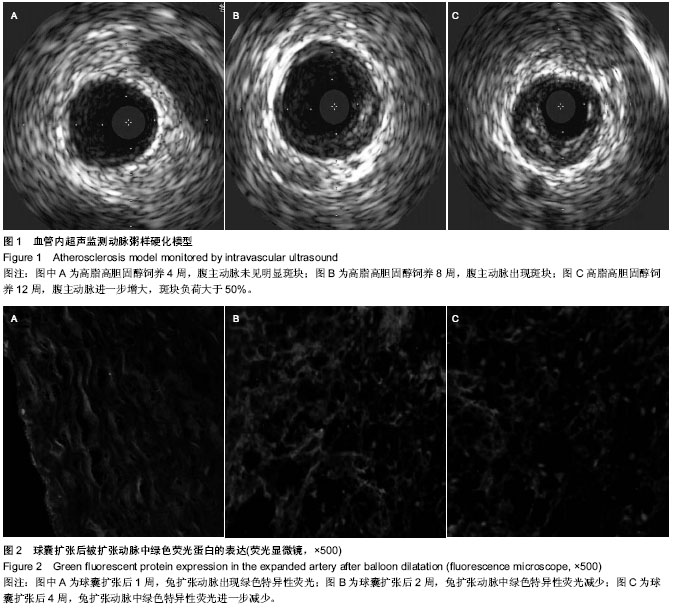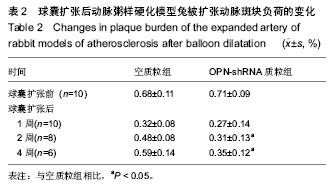中国组织工程研究 ›› 2014, Vol. 18 ›› Issue (18): 2801-2805.doi: 10.3969/j.issn.2095-4344.2014.18.003
• 器官移植动物模型 organ transplantation and animal model • 上一篇 下一篇
转导骨桥蛋白短发夹状RNA预防动脉粥样硬化模型兔血管成形后的再狭窄
孙玉梅1,2,张金盈1,闫继锋2,袁 斌2,杨鹏伟2,李 文2,于运福2
- 1郑州大学第一附属医院心内科,河南省郑州市 450000;2河南省胸科医院心血管内科,河南省郑州市 450000
Transduction of osteopontin short hairpin RNA in prevention of restenosis after angioplasty in a rabbit model of atherosclerosis
Sun Yu-mei1, 2, Zhang Jin-ying1, Yan Ji-feng2, Yuan Bin2, Yang Peng-wei2, Li Wen2, Yu Yun-fu2
- 1Department of Cardiology, First Affiliated Hospital, Zhengzhou University, Zhengzhou 450000, Henan Province, China; 2Department of Cardiology, Henan Provincial Chest Hospital, Zhengzhou 450000, Henan Province, China
摘要:
背景:血管成形后再狭窄严重限制了经皮冠状动脉介入治疗的应用和远期疗效。平滑肌细胞的表型转变,增殖是血管成形后再狭窄的重要机制。 目的:探讨利用球囊在体转导骨桥蛋白短发夹状RNA,通过抑制实验性动脉粥样硬化模型兔损伤血管部位骨桥蛋白的表达,预防血管成形后再狭窄。 方法:构建动脉粥样硬化模型兔20只,随机等分成空质粒组和OPN-shRNA质粒组,分别利用球囊在腹主动脉导入OPN-shRNA质粒和空载体。 结果与结论:2组兔球囊扩张后血管平滑肌层出现特异性绿色荧光,且随转染后时间的延长荧光强度逐渐降低,与空质粒组相比,OPN-shRNA质粒组兔扩张动脉的管腔面积明显增加,而斑块负荷明显减小。提示在动脉粥样硬化兔模型局部血管利用球囊导管能成功地转导OPN-shRNA质粒,被扩张血管的再狭窄程度减轻,血栓负荷减轻。这对于预防模型兔血管成形后再狭窄的发生具有十分重要的意义。
中图分类号:


